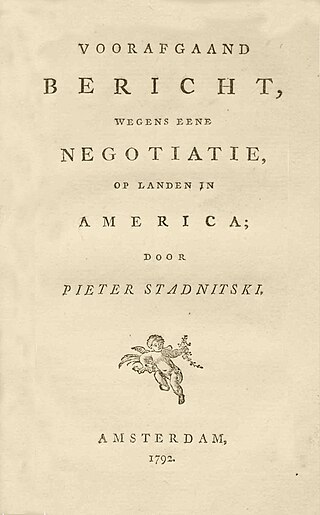
Willem Hesselsz de Vlamingh was a Dutch sea captain who explored the central west coast of New Holland (Australia) in the late 17th century, where he landed in what is now Perth on the Swan River. The mission proved fruitless, but he charted parts of the continent's western coast.
Ridderschap van Holland was a large retourschip, the largest class of merchantmen built by the Dutch East India Company to trade with the East Indies. In 1694 the ship sailed for Batavia on her fifth voyage, but was never heard from again. She is now thought to have been shipwrecked off the west coast of Australia.
Vianen was a 17th-century Dutch East Indies Company sailing ship, used to transport cargo between Europe and the Indies. She was shipwrecked but refloated on her first voyage, and shipwrecked and sunk on her second. Built at Amsterdam in 1626, she had a gross tonnage of 400.
Aagtekerke was a ship of the Dutch East India Company built in 1724. It was lost without trace during its maiden voyage in 1725–26, sailing from Cape of Good Hope in the Dutch Cape Colony to Batavia in the Dutch East Indies.
Detmar was an 1869-built, 32-metre long, German two-masted wooden schooner. It was owned by W. Philippi & C and had a home port of Hamburg.
Ravesteyn, also written as Ravensteyn, Ravenstein or Ravestein, was an 18th-century East Indiaman of the Dutch East India Company.
Macclesfield was launched in October 1720 on the River Thames. She made four voyages for the British East India Company (EIC) before she was sold in 1732.

Pieter Stadnitski was a Dutch broker and financier who invested in the United States, including federal and state debt, canal companies, and land speculation, especially the Holland Land Company. He was the first to bring speculative American bonds - issued by the Congress to finance the American War of Independence - to the Amsterdam market in 1787. Stadnitski was co-founder in 1789 and from 1793 head of a small group of Amsterdam trading houses that bought land in the states of New York and Pennsylvania on a large scale. His role was considered significant by Thomas Jefferson.
De Negotie often shortly written as Negotie was a 1784 built ship of the Dutch East India Company.
Anna Catharina was an 18th-century East Indiaman or "mirror return ship" of the Dutch East India Company.
Horstendaal, also written as Horftendaal and Horstendael, was an 18th-century East Indiaman of the Dutch East India Company.
Lelie was a 17th-century East Indiaman galiot of the Dutch East India Company.

Jonge Thomas, also written as De Jonge Thomas was an 18th-century East Indiaman of the Dutch East India Company.

Wapen van Holland was a 17th-century merchant ship of the Dutch East India Company.

Dankbaarheid, also written as Dankbaarheit or Dankbaarheyt, was an 18th-century East Indiaman of the Dutch East India Company.
Honkoop, also written as Honcoop or Hencoop, was an 18th-century East Indiaman of the Dutch East India Company. She was a merchant ship that made multiple voyages from Texel, Dutch Republic to Batavia, the Dutch East Indies. The Royal Navy captured her in 1781 during the Battle of Saldanha Bay. In 1782 during a gale, the ship with up to 313 crew members, was lost; she was believed to have foundered with all hands.
Middelburg, also written as Middelburgh, was an 18th-century East Indiaman of the Dutch East India Company.
Valkenbos, also written as Valkenbosch, was an 18th-century fluyt of the Dutch East India Company.
SS Thasos originally named SS Theben was an 1878-built, 82-metre long, German cargo steamship. It was owned by the Kosmos Line sailing for years to South America. In 1895 the ship was acquired by the Deutsche Levante-Linie scheduled for a regular connection to countries around the Black Sea.




